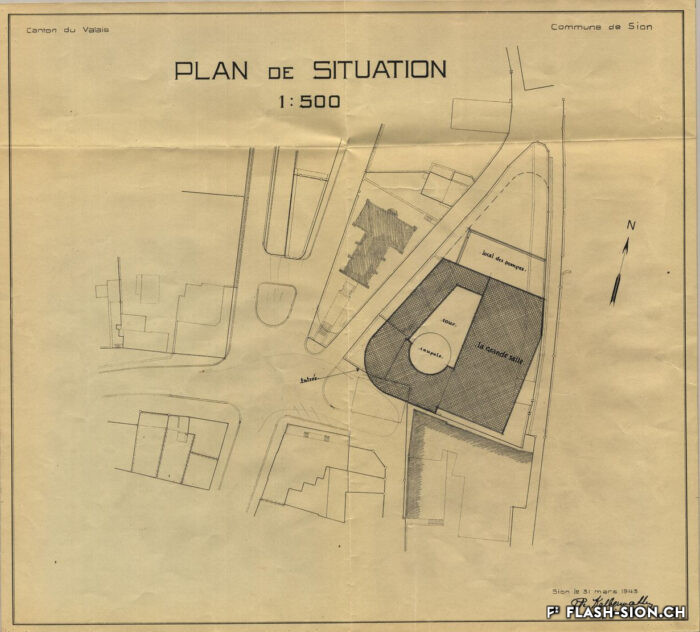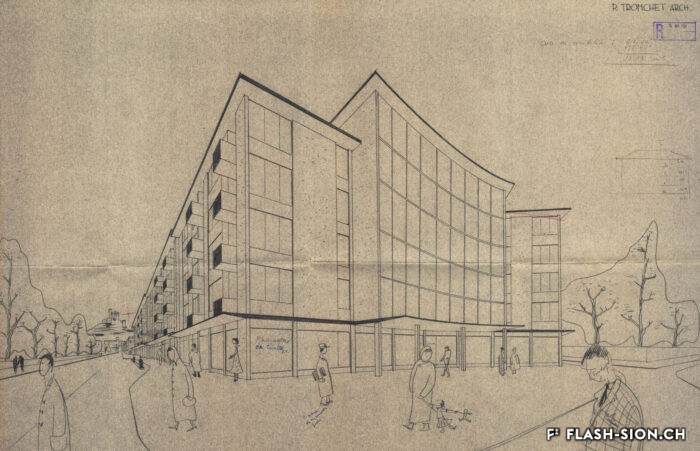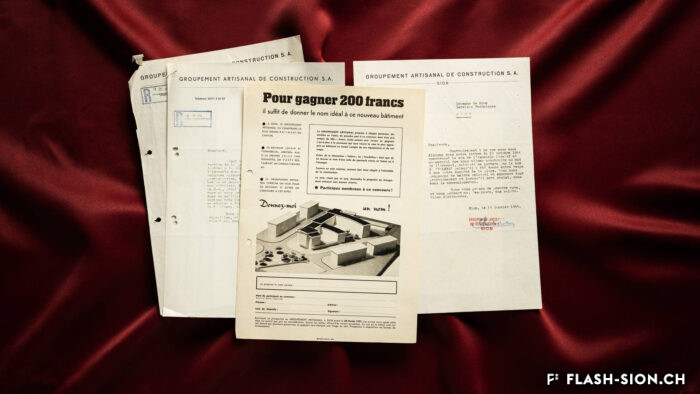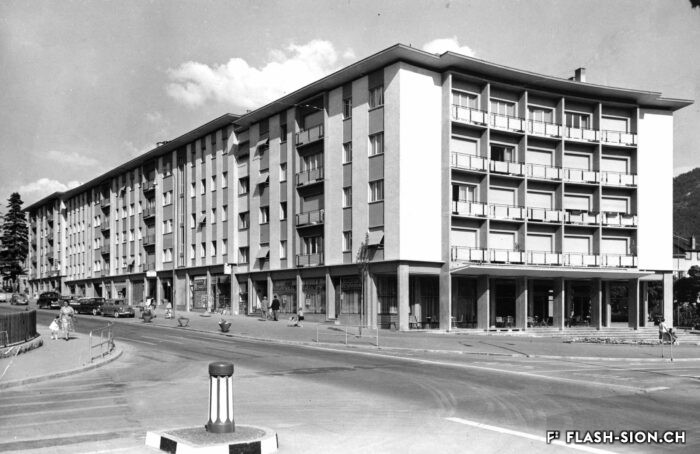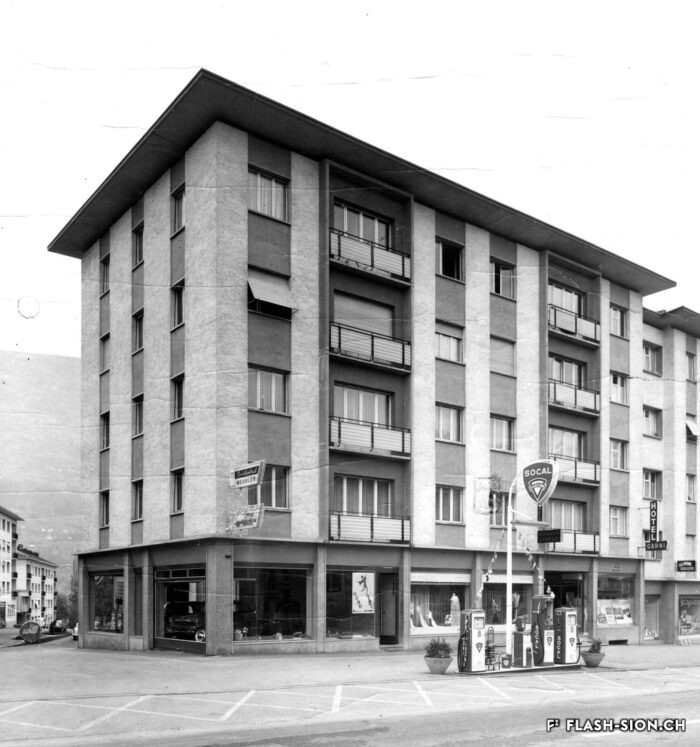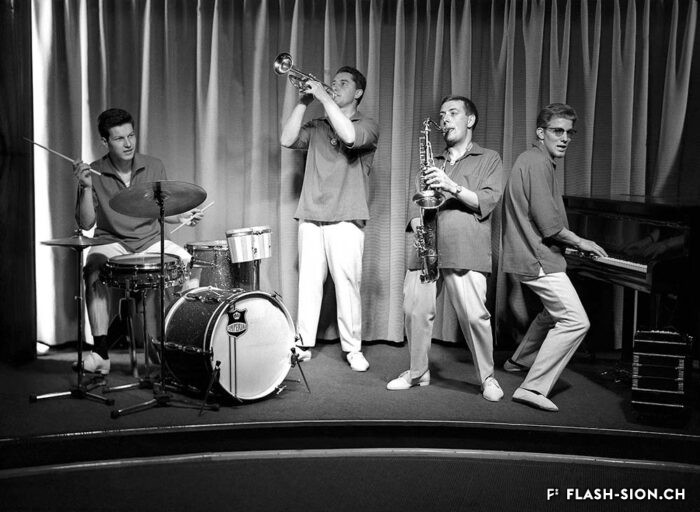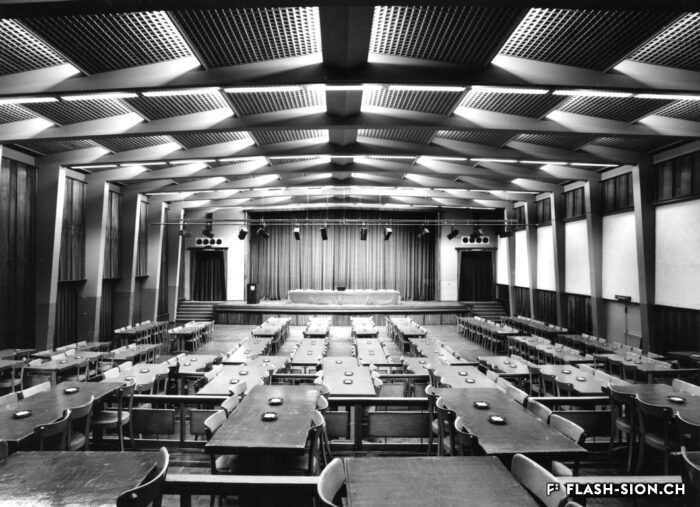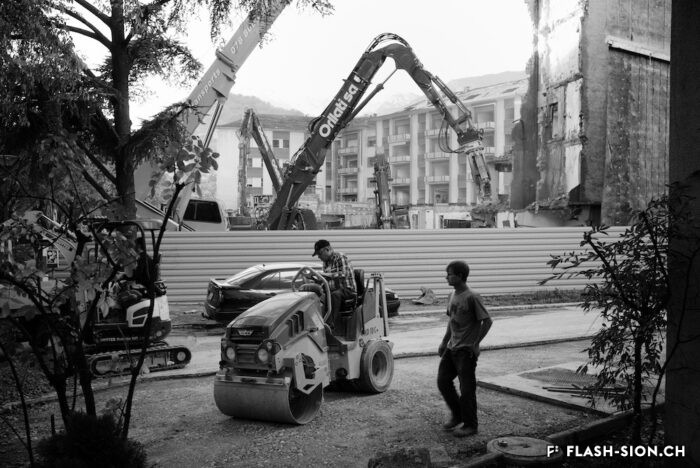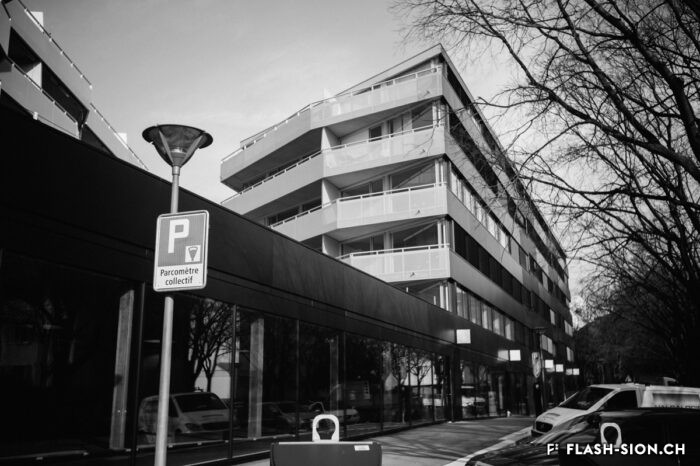Danses interdites à la Matze
Au milieu des années 1950, le complexe de la Matze introduit une nouvelle échelle et manière de penser la ville dans un quartier encore marqué par des vergers. C’est le Groupement Artisanal, fondé par les frères Raymond, Marcel et Pierre Kamerzin et Armand Varone, qui porte et finance le projet dessiné par l’architecte Robert Tronchet. Avec ses 13 commerces de première nécessité, un hôtel, un restaurant-bar et 87 appartements à loyer modéré, il constitue jusqu’à sa démolition en 2014 une véritable petite cité à lui seul. La légendaire Salle de la Matze, avec ses 800 places assises, reste longtemps la plus grande salle de spectacle du canton. Elle ouvre en 1959, après d’âpres négociations qui ont conduit les promoteurs à accepter l’inscription d’une servitude en faveur de la Municipalité. Quant au premier dancing de plaine, perçu comme un lieu de « débauche dangereux » et refusé par la Ville, il reçoit finalement l’approbation de l’évêque… sous conditions de fermetures temporaires obligatoires durant les périodes de l’Avent et du Carême.
Verbotene Tänze in der Matze
Mitte der 1950er Jahre setzt die Grossüberbauung der Matze in einem von Obstgärten geprägten Quartier einen neuen Maßstab und Ansatz der Stadtplanung. Das Projekt des Architekten Robert Tronchet wird vom Groupement Artisanal der Gebrüder Raymond, Marcel und Pierre Kamerzin sowie Armand Varone getragen und finanziert. Mit seinen 13 Geschäften für den täglichen Bedarf, einem Hotel, einem Restaurant-Bar und 87 Wohnungen mit erschwinglichen Mieten bildet der Komplex bis zu seinem Abriss im Jahr 2014 eine kleine Stadt in sich. Der legendäre Saal der Matze mit seinen 800 Sitzplätzen bleibt lange Zeit der größte Veranstaltungssaal des Kantons. Er wird nach zähen Verhandlungen, in deren Verlauf die Bauherren zur Eintragung einer Grunddienstbarkeit zugunsten der Gemeinde verpflichtet werden, 1959 eröffnet. Das erste Tanzlokal in der Talebene hingegen wird als Ort “gefährlicher Ausschweifungen” wahrgenommen und von der Stadt vorerst abgelehnt. Schliesslich erhält das Lokal die Genehmigung des Bischofs … unter der Bedingung, dass das Dancing während der Advents- und Fastenzeit geschlossen bleibt.
Forbidden dancing at la Matze
By the mid-50’s, the building complex of la Matze was a pionneer reference in terms of scale and way of conceiving the town in an area still imprinted by orchards. The Raymond brothers together with Marcel and Pierre Kamerzin and Armand Varone founded the Groupement Artisanal (craftsmen union), which was supporting and funding the project drafted by the architect Robert Tronchet: 13 basic goods shops, a hotel, a bar-restaurant and 87 moderate rental price flats. Until 2014 -when it was pulled down- it stood as a shear little town per se. The legendary hall la Matze -with a capacity of 800 seats- remained the biggest hall of the canton for quite a while. Its was opened in 1959 following up fierce negociations, among which promoters came to agree upon a right of way in favour of the Municipality. As to the first dancing ever existing in the plain it was looked upon as a ‘‘dangerous’’ place of ‘‘debauchery’’. First turned down by the Town, it was finally approved by the bishop… under the conditions of temporarily and compulsorily closing down during the Advent and Lent.
Danze proibite alla Matze
A metà degli anni Cinquanta, il complesso della Matze introdusse una nuova scala e un modo di pensare la città in un quartiere ancora dominato dai frutteti. Fu il raggruppamento artigianale “Groupement Artisanal”, fondato dai fratelli Raymond, Marcel e Pierre Kamerzin e da Armand Varone, che sviluppa e finanzia il progetto dell’architetto Robert Tronchet. Con 13 commerci essenziali, un hotel, un ristorante-bar e 87 appartamenti a basso costo, costituiva una vera e propria piccola città a sé stante, fino alla sua demolizione nel 2014. La leggendaria Salle della Matze, con i suoi 800 posti a sedere, è rimasta a lungo la più grande sala da spettacolo del Cantone. Fu inaugurata nel 1959, dopo dure trattative che portarono i promotori ad accettare l’iscrizione di una servitù a favore del Comune. Quanto alla prima sala da ballo della pianura, percepita come luogo di “pericolosa dissolutezza” e rifiutata dalla città, riceve finalmente l’approvazione del vescovo… con l’obbligo di chiusura temporanea durante i periodi di Avvento e Quaresima.
